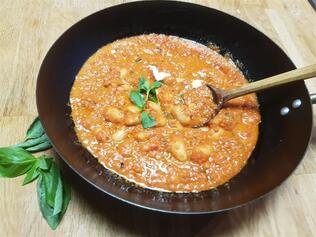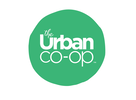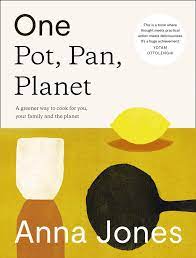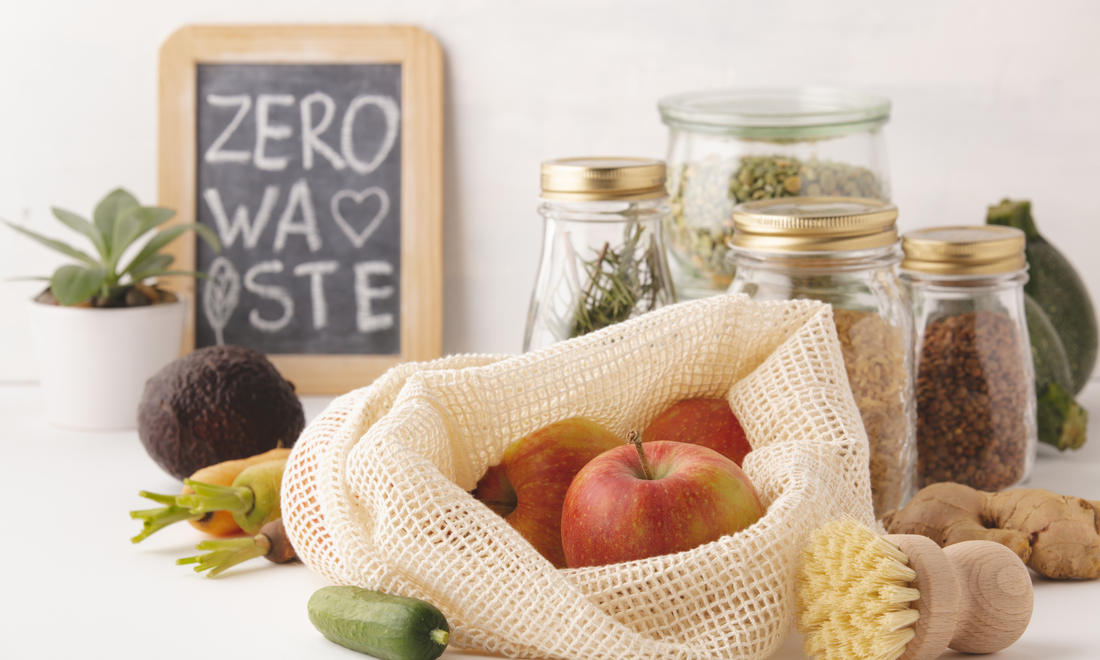|
It can feel overwhelming, maybe even a little preachy, when someone starts waxing lyrical about their zero waste tips and tricks. If it’s not something you’ve ever tried, or if it’s something you might be intrigued about but don’t know where to start, there’s no easier first step to take than a slight tweak to your household cleaning products.
Conscious consumers, in an attempt to avoid household cleaning products that may contain unwanted ingredients, sometimes find they struggle to source an effective natural alternative. Often, the available alternatives might leave you feeling like you just haven’t given the house the thorough scrub that it needs. Many of us have made a return to the days when a household cleaner was as basic as a bottle of vinegar. White vinegar boasts many benefits as a household cleaner, chief among them being its ability to remove dirt while also providing an odour-eliminating effect. Vinegar is also ideal to mix with baking soda for harder to remove grubby areas. Of course you could go really old-school, donning the rubber gloves and wielding the vinegar undiluted, but there are ways to spice things up a bit while still staying true to the tried and tested favourite. Add a few drops of your favourite essential oils to a spray bottle of vinegar. Essential oils do more than just permeate your home with your favourite scent - many of them are ideal as cleaners due to their antibacterial properties. Lemon, grapefruit, lavender, tea tree and eucalyptus oils are all ideal in that, depending on which one you choose, they contain antibacterial, antimicrobial and antiseptic properties. If you choose the one that you most associate with a clean, sparkling home (or combine all of them, and let us know the result - you might end up creating your own signature scent!), you might even start to look forward to tackling the cleaning! PS: Did you know that you can replace the vinegar in homemade cleaning products with vodka?! It has the same effect as vinegar in cleaning, so can be a good alternative for those who might find the vinegar scent unappealing. I’m sure we can all think of better uses for a bottle of vodka, though, so maybe we’ll stick with the vinegar for now… Kelly Girardi
0 Comments
Now that the frosts are clearing away and planting season is upon us there is an enthusiasm to grow foods for ourselves. Whether we are green fingered or not we are hostage to the seasons for our very existence and health. Tuning in to the foods that sustain us throughout the year in order to get the best for our bodies is worth spending time on.
For far too long we have become desensitized to the seasons as foods have been available all year round from all over the world at any time of the year. Perhaps the challenges to the food supply may give us pause to eat more locally and seasonally! So where to start? I find it useful to think about the lifecycle of a plant to help decide when is the most seasonally appropriate food and time. Now is the time for green shoots! Asparagus, spring greens, young salad, rocket, wild garlic, young nettle leaves. They are tasty at this time and full of the promise of the year. Great for cleansing the body after the winter indoors. As plants begin to produce flowers we have plants like cauliflower, broccoli, romanesco. The leaves become more bitter as they flower and bolt to produce seed so often can taste sharper. Fruiting plants such as tomatoes, aubergines, peppers, courgettes are a stage further on in the Summer. Plants with seeds that we eat include peas, beans, herbs towards the later Summer. As autumn/winter approaches the plants aim to store their energies in the roots (beetroot, carrots, potatoes) or over ground in pumpkin style foods. Enjoy foods when they are at their best and your body will thank you for it! Anne Maher
 Butter beans in sauce are so good. If you can cook the butter beans yourself, they melt in your mouth. Of course many of us, including me, do not think ahead. We step into the kitchen and wonder what to make for dinner, we have 1 hour max. so the tinned versions are very handy. If you want it creamy tasting all you need to do is add that lovely tangy cream cheese from Hungry Soul 😋… available in the Urban Coop. Such an easy dish to make and so tasty … 100% Vegan, of course 😜 RED PEPPER, CHERRY TOMATO & BUTTER BEAN SAUCE
...with a dollop of Hungry Soul plain & natural creamy cheese. INGREDIENTS
METHOD
Serve it on pasta, couscous...or perfect with gnocchi. Inspired by Paul Flynn of the Irish Times. He just needed a little help to veganise it, and of course I changed a few things as I do… à la Hungry Soul! Jacques Brennan  I was in the south of France recently just alongside the Italian border where I tasted one of my favourite dishes from the region where tomatoes, peppers, olives and garlic grow in abundance. It’s a dish that has variations all over the Mediterranean region, but this one is the one I’m most familiar with. It can be used in so many ways, as a topping on cooked dough, in a tart, as a sauce for pasta (though it needs to be left a bit more saucy to cover the pasta) – or even on its own as a cold salad dish to accompany fish, cold meats, eggs, or rice salads. When I spotted extra large Spanish yellow peppers in the Co-op last week I couldn’t resist the temptation to cook it at home. Pepperonata or Piperade
METHOD In a large wide base pan heat the olive oil and add the chopped garlic to infuse gently in the oil for a few minutes. Be careful! Keep the heat low as you only want to flavour the oil, not to burn the garlic. Then add the sliced onion(s) and the peppers cut in batons and stir so that everything gets coated in oil. Raise the heat a little and keep stirring and cooking for about 30 minutes. Slowly the peppers will soften and begin to taste sweet. When the peppers are mostly cooked add the tomatoes and raise the heat to get the tomatoes bubbling well. Put the lid on the pan now so that the tomatoes will cook better in the steam of the pan. After 10 minutes lift off the lid, stir and taste to see if the sweetness of peppers is coming through. If not, return to heat with lid and cook for another 5 – 10mins. (Do not season yet as the olives – if using will add quite some saltiness to the dish.) Now, if the tomato sauce is a bit runny you could raise the heat and boil off some of the juice for another 5 minutes but be attentive that it doesn’t stick. (Alternatively you can leave it at like this if you are service with pasta or rice) Then add the chopped black olives, stir around, and cook for 2 minutes – taste. Now you can season the dish and stir it the parsley. Serve hot or cold with anything that takes your fancy. Katie Verling
Nutty green bean salad with vinaigrette
METHOD Throw the frozen beans into the boiling salted water, and putting the lid on the pot bring the water back to boiling point as quickly as possible, then remove the lid so that the beans will keep their colour. (This is a top tip that both Darina Allen and her brother Rory O Connell recommend to maintain the colour of green vegetables – I don’t know why it works, but it does.) When the beans are barely cooked strain them through a colander and put them into a servicing bowl. While the beans are boiling, put the almonds into a hot pan with a drop of olive oil, swirl them around and lower the heat and stir them occasionally for 15-20mins – don’t let them burn!! (You’ll get a lovely smell of toasting nuts as they cook). Then dump the almonds onto a large chopping board and when they’ve cooled, chop them roughly with a large chopping knife – avoid the temptation to put them into a blender – you’ll end up with nut powder in seconds. Using the same pan throw in the sesame seeds and cut over a medium heat, stirring frequently for about 5 minuts until they are nicely toasted (if the pan gets too hot the seeds will begin to pop and jump off the pan). Put the chopped almonds and sesame seeds in with the beans. Vinaigrette recipe
Blend the mustard, salt and vinegar then add the mustard very slowly at first, stirring vigorously all the time; keep adding the oil until you have a thick sauce. Taste and adjust if necessary. I do not use honey to sweeten this vinaigrette as I don’t believe it’s necessary, but do so if you like. You could also add a squeeze of lemon juice if you like to sharpen and enliven the vinaigrette. I use this vinaigrette recipe all summer long and for a lot of winter warm salads too – it is a perfect blend of sharp and sweet with the mild kick of mustard – it works on everything. VARIATION: You could use this salad recipe and add tins of other beans to it to make a 3 or 4 bean salad – chick peas, butter beans, flageolet beans even chilli or black beans work well. You many need to add more mustard to the vinaigrette, and a handful of chopped scallions to red onion to strengthen the flavour. This salad benefits from a couple of hours resting (covered) in the kitchen for the flavours to blend and develop). Katie Verling If you ask someone whether it’s possible to shop both sustainably and affordably, you’re likely to be met with raised eyebrows and a skeptical stare. The idea of shopping sustainably has come to be known as possible only for a niche group in society, a group with a certain lifestyle - people with money, time … and, as the more cynical amongst us might say, “notions”. Before that, and even alongside that, we have associated a sustainable way of life with hippies, with hermits.
These lingering associations are a shame. We feel if we don’t fall into these groups, we are already excluded. These associations can box us off from even thinking about whether, or how, we can incorporate more sustainable shopping into our lives. It feels unattainable; available, or of interest, to select groups only. Magnifying that shame is a quiet whisper of truth. It can, indeed, feel impossible to break into an already established group. It can absolutely feel difficult to put time into seeking out spaces like The Urban Co-Op which exist to provide us with the chance to take a first step. It can, of course, feel like too much of a gamble to dedicate ourselves to something unfamiliar, something new - especially when the something new is choosing where to spend our time and money. It can, indeed, become expensive to reconsider where we shop, where we are familiar with the prices, with what we can afford. It can feel overwhelming to rethink these things, to try and figure out even a first step. Compounding this shame further is the knowledge that it didn’t used to feel this difficult. Once upon a time, sustainable living wasn’t a conscious lifestyle choice, seemingly available only to those with the money and time to indulge this desire. It was just the normal way of life - self-sufficiency, interdependence, organic growing, moving cyclically and locally with the seasons, a sense of community. I can sense you rolling your eyes. These ideas and terms have, indeed, become distilled into buzzwords, buzzwords that we are bombarded with on a daily basis to the extent that they have lost all meaning. But, once upon a time, we didn’t use all these words. We didn’t speak like this. We just lived like this. As the world changed and seemed to reward us for moving away from this way of life, it became more difficult, and even undesirable, to continue on with it. We couldn’t afford to invest, neither the time nor the money, in a way of life that was starting to be seen as backwards and these words, these favourite words of our time - unproductive, inefficient, time-wasting. But we know this story. Let’s not dwell too long on the “why” and the “how” of having reached this point. We are all aware of the difficulties, the problems, the obstacles we face. It’s time to talk about options, possibilities, solutions. Can we get to a place where we start to unpick what it means to live more sustainably, and how this might become more of a norm? Can we start to figure out how to make this attainable and, importantly, desirable for greater swathes of society? What can we do? The trick, here, is baby steps. The trick, here, is to think about it in small actions that we can take, one at a time, and slowly build on that. Getting to know The Urban Co-Op is a way to start. Below, we offer some suggestions and benefits of sustainable shopping at The Urban Co-Op. Suggestions that might help to deepen your understanding of The Urban Co-Op, and ways to incorporate it sustainably into your shopping routine:
Those are, admittedly, the more difficult parts of starting on a journey of shopping more sustainably. Maybe you don’t have the time or interest to dive that deep. Maybe that all feels too much like homework! So, instead, here are some tangible benefits you’ll experience once you start to explore The Urban Co-Op:
Some of these suggestions are more manageable than others. Some you will be able to implement and benefit from immediately. Others are much more of a process - of small steps, of reading, of questioning, of consciously choosing. Let us end with this: when you walk through the doors of The Urban Co-Op, your eyes will be drawn to a large blackboard. The board is illustrated with the story of The Urban Co-Op - from inception to present day. Bordered by an intricate timeline of its history stands The Urban Co-Op’s core purpose: “Coming together as conscious consumers to support the health, wellness and economic security of our community and planet”. This purpose encapsulates precisely what we’ve been teasing out throughout this article. This is what we talk about when we talk about shopping sustainably. It is about supporting ourselves, supporting each other, and supporting the planet. This coming together isn’t a quick fix. The world isn’t going to change overnight because you brought your reusable container to The Urban Co-Op to bulk buy laundry detergent. But, like all lasting change and all progress worth working towards, these small steps will eventually add up. And, if you start to see the benefits in your own life, in your own days and weeks, you will want to keep going. It might not seem like much, but it’s an important first step. As we enter 2022, maybe you can ask yourself whether there is a small step you’d like to take? Maybe something you’ve had in the back of your mind for a while, but haven’t felt ready or able to try just yet? Maybe even having a think about this could be your own first step. Remember - if you feel you need a nudge, there will always be a friendly face and a helping hand at The Urban Co-Op. Kelly Girardi
|
Categories
All
Archives
July 2024
AuthorsRecipes from Katie Verling & Jacques |








 RSS Feed
RSS Feed